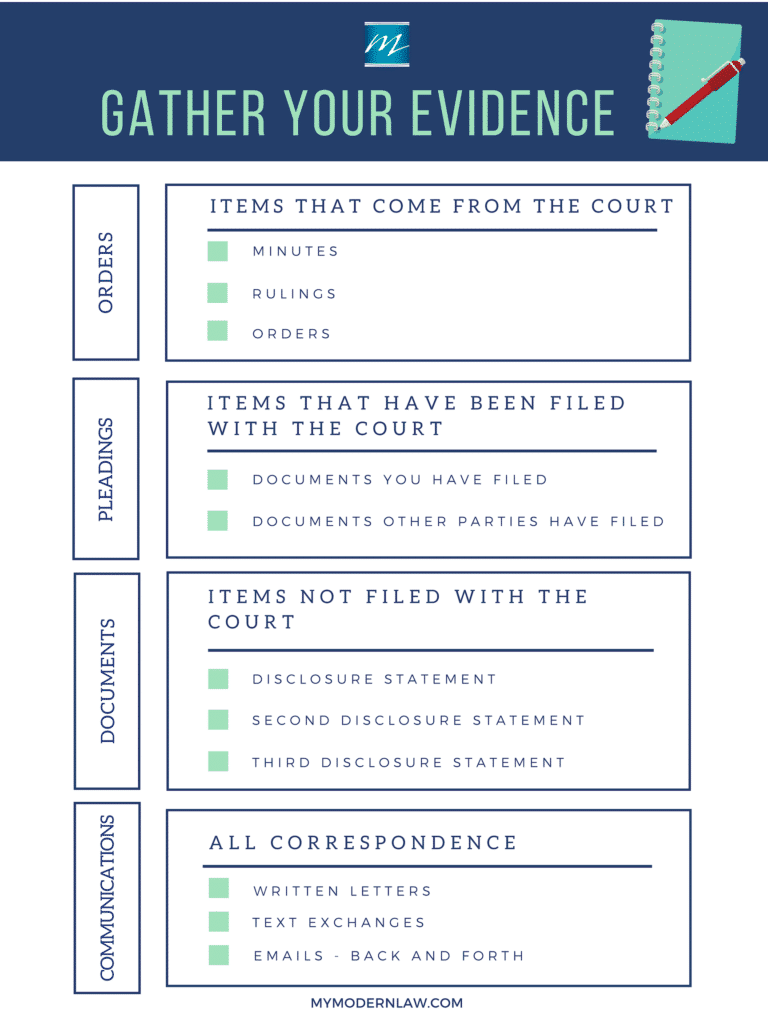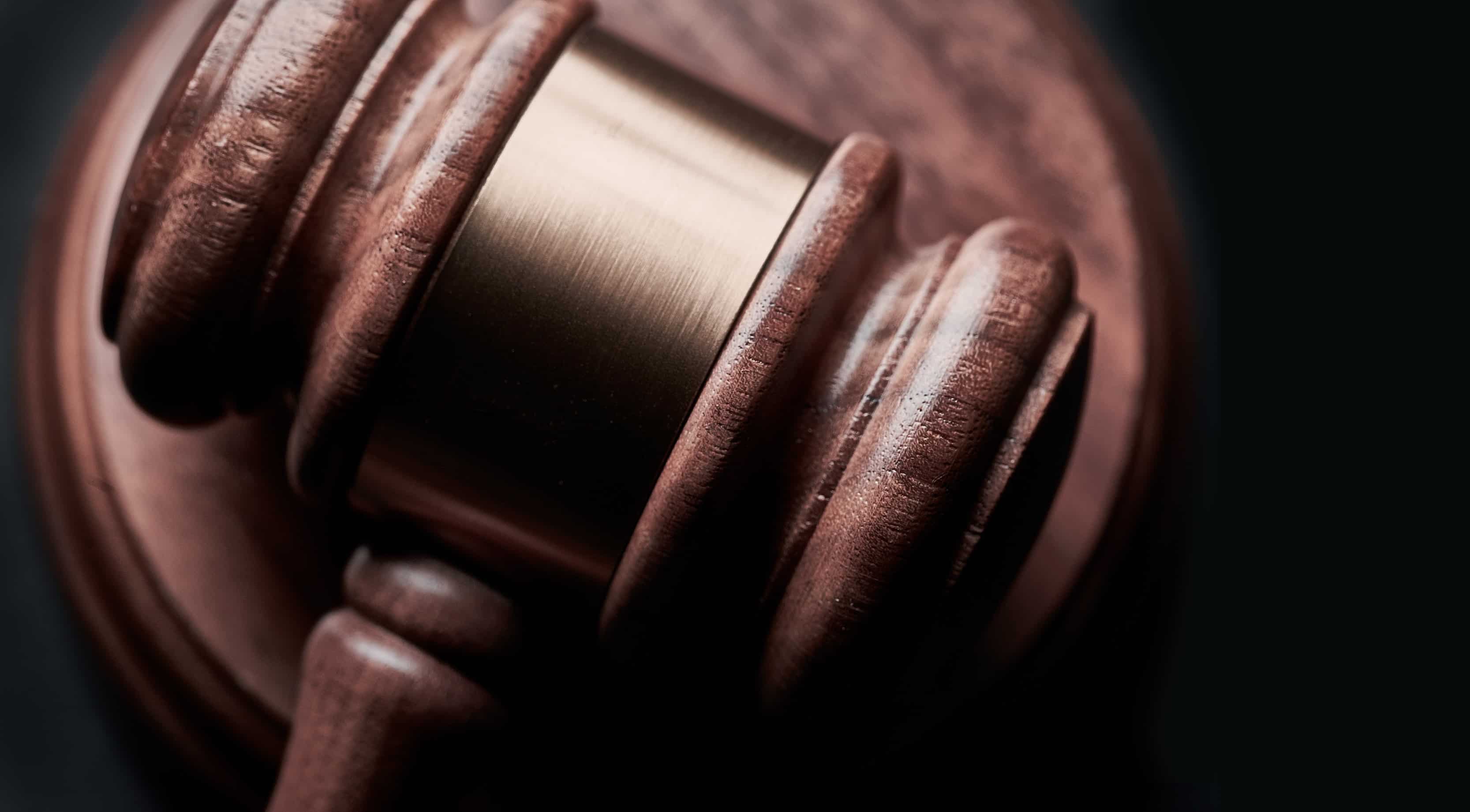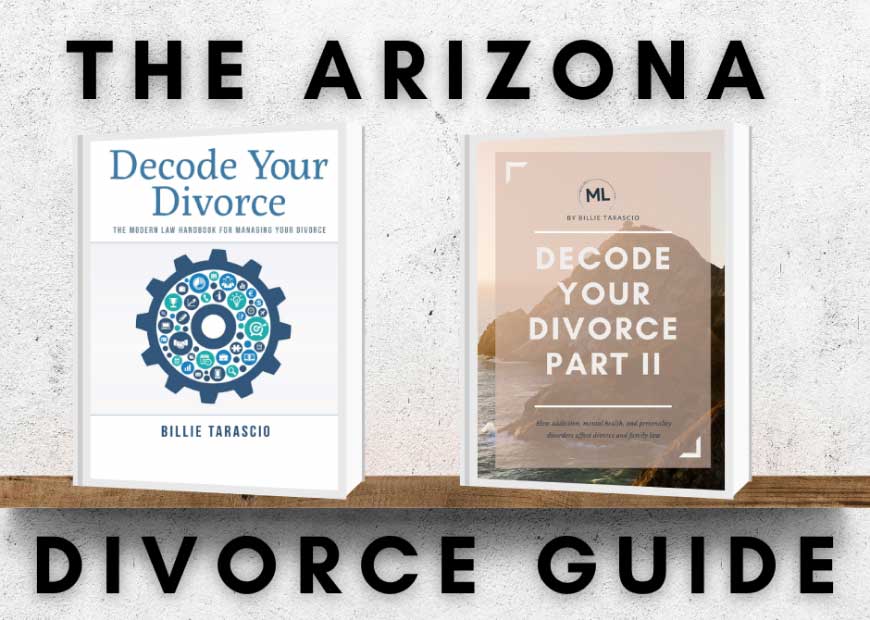How should you organize all of your information for a divorce trial or court date?
You definitely DON’T want to bring in stacks of paper stuffed in different envelopes or manila folders. Knowing where to find the right document when it’s needed will be key.
We recommend you do it this way: create one folder – whether paper or electronic — for each of the following: orders, pleadings filed with the court, documents/pleadings not filed with the court, correspondence.
Gather Your Evidence Into One Place

The Key Documents To Include
Orders are documents that come from the Court. These include the Court’s minute entries, rulings from a Judge, or anything that’s ever happened in your case that was issued from the Court.
Pleadings are documents that have been filed with the Court. You want all of this. These are documents you and opposing party(ies) have prepared and filed with the Court.
Documents Prepared but Not Filed with the Court – These include Disclosure Statements prepared by you or your spouse, including any supplemental Disclosure Statements. It’s a long running list of all your Disclosures. As time goes on you will get more documents, so just add them. For example, if you send new documents like bank statements, list them all out and on what date you sent them to the other party.
Perhaps you have emails that you want to use, add them and list them to your Disclosure Statement. Use standard wording for each additional list — Second Disclosure Statement, Third Disclosure Statement and so on. It’s necessary you have a running log of everything you’ve disclosed and the date it was disclosed.
Correspondence is communications with the other side. It includes emails back and forth that were written that are relevant. For example, if she wrote that she refused to come meet you at the designated drop-off spot because she was too drunk to drive, you’d want to include that. Don’t print out or save every single communication that you have with your ex; think carefully about what could be relevant.
Supplies You May Need
- Computer
- Printer with scanner
- Paper
- File Folders
- Internet
- Two-hole punch
- Clasps
- Paper clips
- Label maker
Keep in mind: Many courthouses have DIY rooms available with all of the above supplies for little or no cost. Libraries are also a resource.
Evidence Source Checklist
Click on the image to download and print and use this handy checklist for gathering evidence for your case. Scan document hard copies and keep them safe and secure in an online folder like Google Drive, Dropbox or Box.





